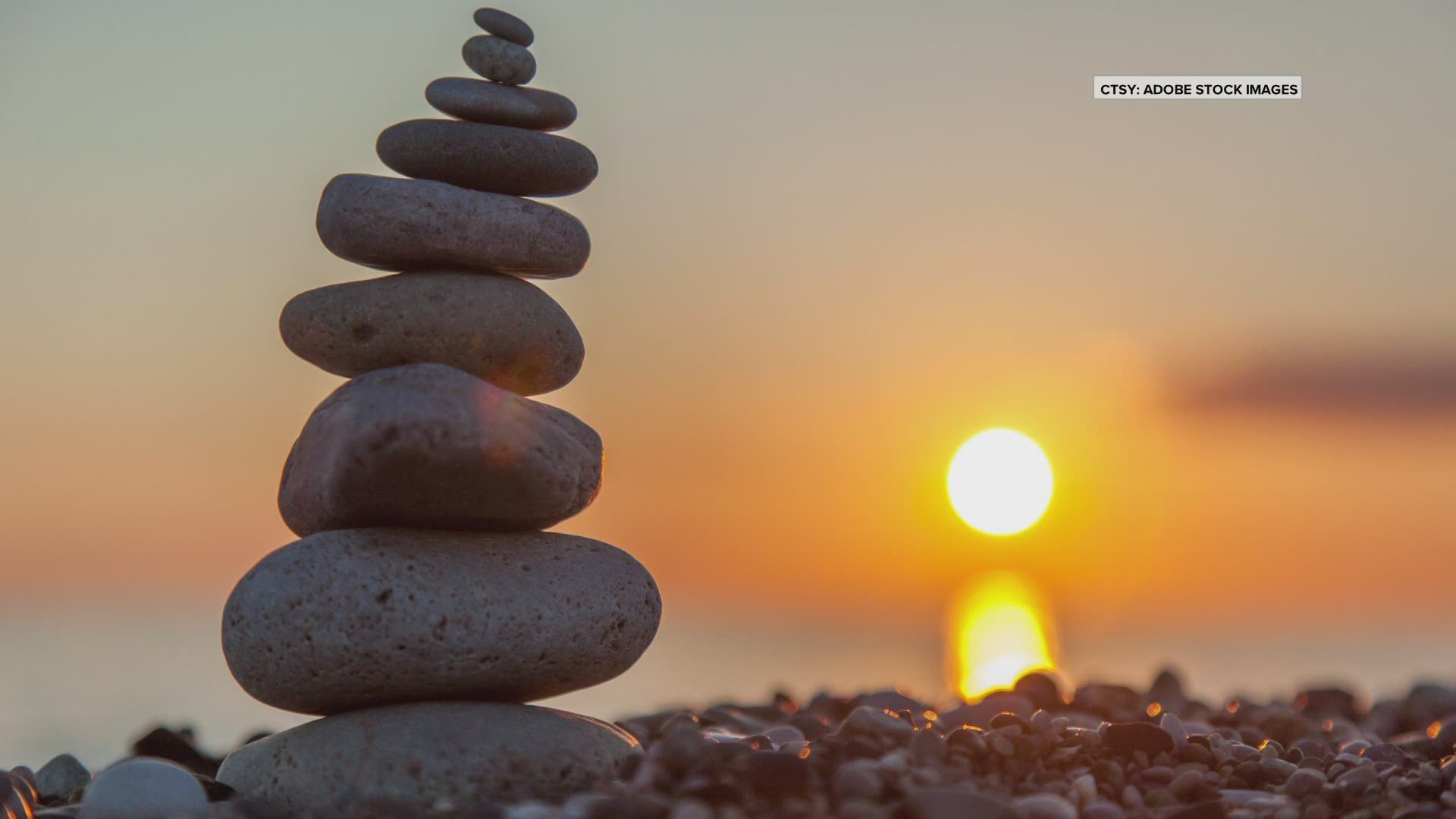MAINE, USA — You see them everywhere—on beaches, alongside hiking trails, and in fields. They are carefully stacked rock formations called cairns. Perhaps you've even made one yourself.
Why do we feel compelled to stack rocks?
Katy Kelleher, an author from Maine, recently wrote about this for National Geographic. As she explains, cairns actually serve many purposes. But when it comes right down to it, they are all about balance.
Kelleher says, "There are people who can do amazing things by just taking a rock and putting it on another rock and I think that's really cool."
"We've been doing this as long as we been making any kind of art," she continued. "Stacking rocks. Some people use it to bury their dead and create tombs. Some cultures use it as a way to guide people with path marks."
"You are putting rocks up that can tell you where to go. They can tell hikers where to find water, can tell you what's an important place spiritually. These rocks cairns are all over the world and used for so many different purposes," Kelleher said.
Kelleher said there's ancient evidence of people building cairns as a way to worship, and others built them as an effective way to keep dead bodies contained.
"So it's all over the map as to why people do it," she said.
There are examples on every continent except Antarctica, she explained. "Maybe they are stacking ice or something."
"It's something that takes patience and a little bit of thought, but it doesn't require talent or skill," she said. "It just requires that you sit and do it for a minute—to pause long enough that you are allowing these two things to find a balance. There is something very meaningful about pausing for a while and paying attention to create these little monuments. There are a lot of different religions that use this. In the Jewish faith, you're supposed to leave a rock on the tombstone. It's a way of saying 'I was here. I came. I witnessed. I came for you. I came to respect your memory.'"
"There is something very in-line with many religious traditions about this because it is not just saying 'I'm here, I've lived,' it's also recognizing something you are building that will fall over is temporary," Kelleher continued. "You are participating in the geological timescale on the level of rocks. But you're also making something that, like every single life, is temporary. And that balance of those two tensions, finding that sweet spot where you can recognize that yes, we're going to die, but I was here, that can be a way to find a lot of peace."
As we are still in the throes of a pandemic, we could all use that feeling right now.
One note though: You do have to be mindful of where you build cairns.
Kelleher reminds us that removing rocks from the landscape can lead to soil erosion, and erecting them on hiking trails can confuse hikers looking for direction.
The Summit Rangers in Acadia National Park actually take down the cairns when they find them for those very reasons.
Watch Cindy Williams' full interview with Kelleher here:

